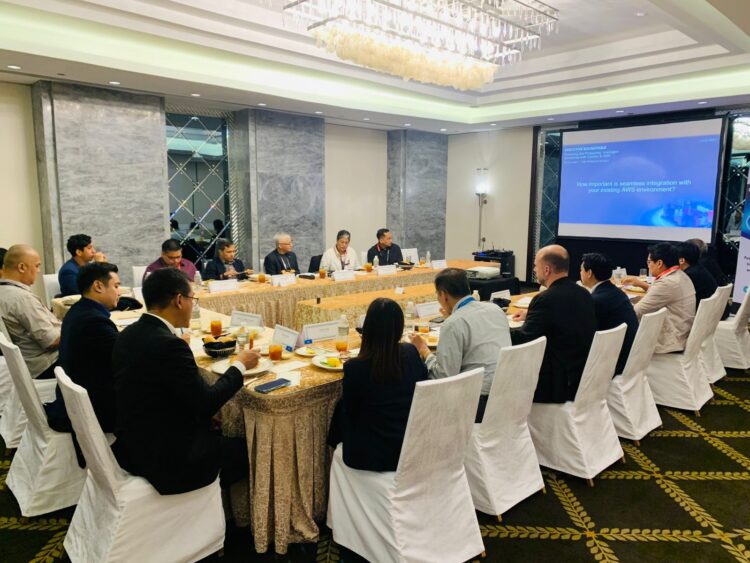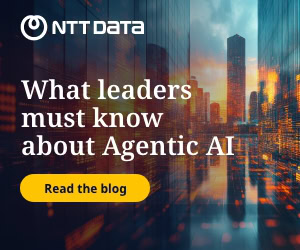The Philippines is at a critical juncture in its AI journey. While government mandates and investment flows signal a strong commitment, enterprise leaders wrestle with fundamental challenges that separate AI ambition from execution.
"The Philippines is at a very critical inflexion point," explained Grant Case, field chief data officer for APJ at Dataiku during a FutureCIO AWS-Dataiku roundtable in the Philippines. "What we are seeing right now is a need to act decisively for the Philippines." The Department of Trade and Industry estimates that $2.6 trillion in potential new GDP could flow into the country with the adoption of AI.
Harsh realities temper this optimism.
One delegate to the roundtable commented that the 85% failure rate of AI POCs, especially Gen AI POCs, is due to insufficient articulation of business value and foundational challenges such as data quality.
The execution gap: From POC to production
Philippine enterprises exhibit a curious paradox: a high willingness but limited ability to implement AI at scale. The roundtable revealed organisations stuck between experimental phases and production deployment.
Another delegate acknowledged being at the early stages of the adoption curve: "We are just about to get started in really defining our roadmap for AI, as well as get started on some of the early use cases that we want to identify and pilot."
This sentiment echoes across sectors. One delegate from a large local company acknowledged that they are currently trialling the use of generative AI within the IT function: "We are trying to maximise the GenAI via the Copilot."
However, some organisations push beyond basic implementations. One delegate reported significant productivity gains: "What's being reported is around 150% improvement… and this is with the same number of people."
Universities produce talent, but the distribution of expertise creates implementation challenges. "It seems like there's a lot of talent starting to come out of the universities," Case noted. "One of the things we've heard is a lack of teachers and mentors in terms of this shortage. So, it's not necessarily that the talent is not there. It is: do we have the talent to teach the next generation?"
This creates practical barriers. As Mark Niesta, data and analytics leader at Nestlé Philippines, observed, "What I do notice is the lack of engineering talent. I mean, amongst all of us, we all just switch around. We all know each other in the industry."
The foundation crisis: Data quality and integration
Panellists consistently identified data quality and governance as primary blockers. Juan Carlos Ansus, head of IT engineering at Shakey's Pizza Asia Ventures, Inc., shared a cautionary tale: "We attempted to use computer vision for anomaly detection for pizzas... The easiest way they thought of collecting training data was by asking every store to take images using their phones. The quality of the image varied significantly from store to store, and that made it very difficult for the model to achieve high accuracy"
This experience highlights a broader challenge. As Case observed, "I definitely see the Philippines a little bit more behind in terms of building analytic data warehouses, analytic data stores, to do this sort of work."
The discussion revealed integration as equally critical. Organisations with fragmented systems struggle to scale AI initiatives, while those with unified platforms demonstrate better outcomes.
"It is very, very important," emphasised Charmaine Valmonte, FVP, chief information security officer and data protection officer at Aboitiz Equity Ventures, Inc. (AEV) of the Aboitiz Group, which operates in the "established towards expand phase" of AI adoption. "Every single user in AEV thinks about AI and agentic AI, and how to make our job much faster and easier. This is ingrained in our culture."
The integration challenge extends beyond technical architecture to organisational alignment. Niesta noted: "As I see projects get lined up, it is important to have clarity on the actual business outcome we're aiming for. We get into fascinating technical discussions, but without that outcome focus, momentum stalls."
Substantial AI investment compounds these challenges. Francis Adrian Viernes, assistant vice president, chief data scientist and head of data analytics and data science at Megaworld Corporation, identified cost as a primary blocker: "The biggest blocker that I've had is actually that expense, because big companies will have different use cases, and if you aggregate, they have different lines of approval."
The size and diversity of an organisation can also be a significant challenge to AI initiatives. Myk Ogbinar, the corporate head of data analytics for San Miguel Corporation, highlighted that for a large and diverse company, varying definitions of AI's potential create a "literacy component" that influences how employees perceive its possibilities.
He also noted that a major part of his work is aligning leadership on the direction of data & AI initiatives within the company. “It is important to align the organisation around a shared vision for AI initiatives, ensuring that everyone understands what is meaningful and impactful in our AI endeavours. Establishing clear policies and direction for AI within the conglomerate is essential for fostering a unified approach to harnessing its capabilities.”
Success patterns: Collaboration and governance
Organisations achieving AI success share common patterns: unified platforms, cross-functional collaboration, and clear articulation of business value. Michael Magbanua, head of corporate and digital operations at Union Bank, described their measurable impact: "We recently introduced an AI-driven solution to support our AML alert management. It's already making a meaningful impact by autonomously identifying and resolving a significant portion of alerts, streamlining our operations and enhancing operational efficiency."
Successful AI implementations dissolve the traditional IT-business divide. The SM group continues to enhance its customer experience strategies across its businesses as more consumers seek personalised shopping and lifestyle experiences, based on a new global trends report.
To this end, Ramil Cerrada, IT solutions architect senior manager, SM Supermalls, described the company's evolution: "To improve customer experience, most notably through the introduction of SAM (SM Assistant), an AI-powered customer service robot, and the use of AI and robotics solutions for streamlined operations and personalised marketing."
This collaborative approach proves essential. As Case emphasised, "AI is so interrelated with business processes that if your SMEs aren't engaged directly, it won't work."
Organisational commitment drives success. Jose Dalino Jr., chief technology officer of PayMongo, explained: "It's very important to have a culture of experimentation in the organisation. AI isn't just for engineers and technology. We've been encouraging all business users, the product managers, designers, to be heavily involved in, contribute to and participate in AI projects."
Progressive organisations frame governance as an enabler rather than a constraint. Valmonte described Aboitiz's approach: "When an idea is set in motion, the problem statement is identified, you've got somebody from IT, the compliance group, the risk group, the security group in that meeting at the ideation stage."
Front-loaded governance prevents costly reworks later. "The guardrails have to be at the onset, at the idea level," Valmonte explained. However, security concerns remain paramount.
One delegate commented that improving data is important and solvable. However, cautioned that "if there are no guardrails on the security of that data, that could be chaos afterwards."
The path to everyday AI
Dataiku's Case articulated the ultimate goal: making AI "boring", so embedded in business processes that it becomes invisible infrastructure. "If it is boring, that means it's part of the BAU. It is just something in the background," he explained.
This vision requires fundamental shifts in how organisations approach AI, from isolated projects to integrated platforms, from IT-driven to business-driven initiatives, and from experimental to operational mindsets.
As the Philippines navigates this transformation, these enterprise leaders provide a roadmap for others to follow. The country's AI journey reflects broader Southeast Asian challenges: abundant opportunity, willing organisations, but significant execution gaps that require systematic addressing.
To survive and thrive, Philippine enterprises must move beyond POCs to production. However, AI success requires unified platforms, cross-functional collaboration, and governance frameworks that enable rather than constrain innovation. Those who master this balance will be the Philippines' next leaders in AI.






